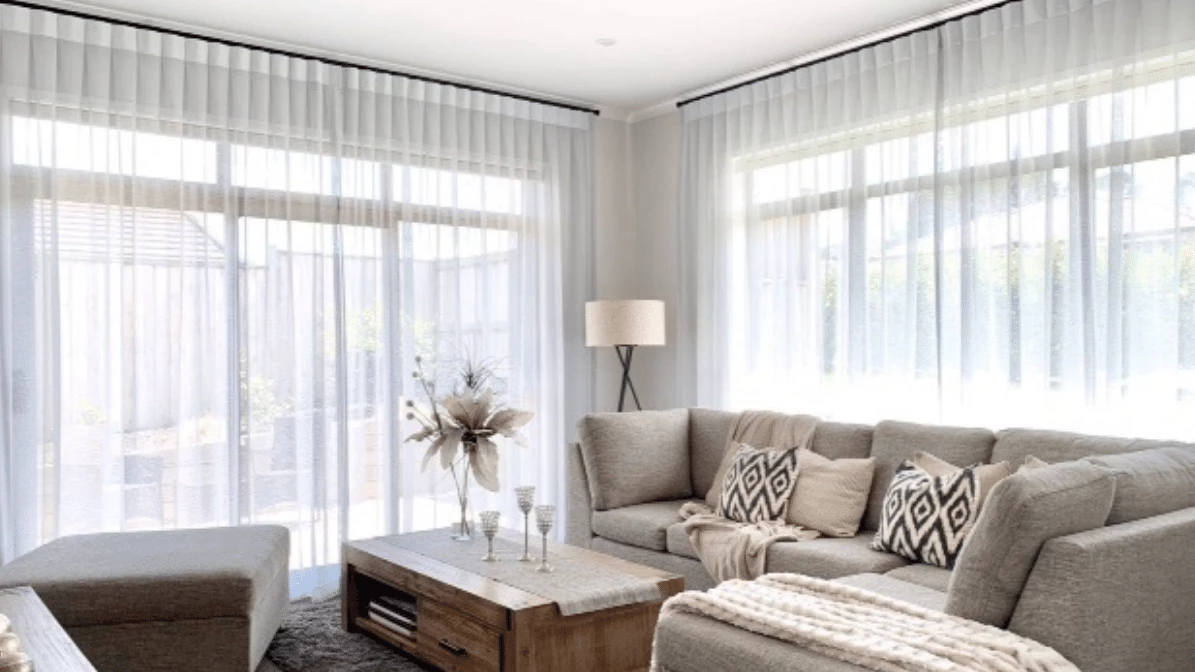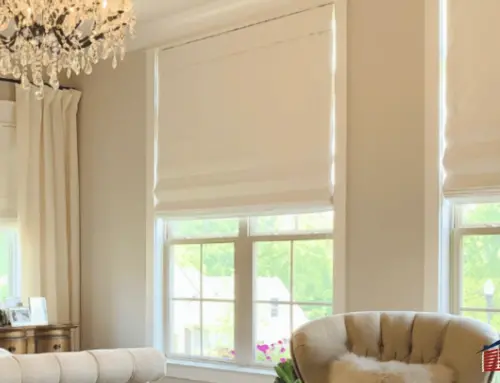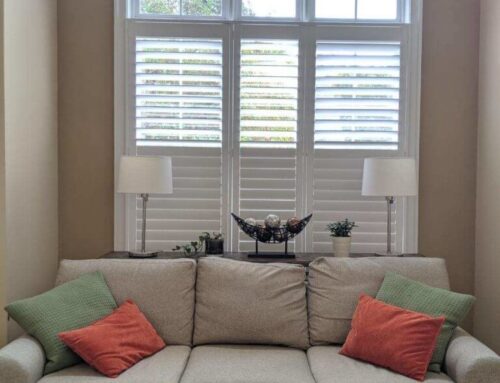Decoding sheer fabrics involves understanding the intricacies of transparency and how it affects the overall appearance and functionality of the fabric. Sheer fabrics are characterized by their lightweight and translucent nature, allowing light to pass through and creating a see-through effect. Due to this, they have the lowest amount of energy efficiency when it comes to trying to protect your heating and air unit from working so hard.
The level of transparency in sheer fabrics can vary widely, ranging from slightly translucent to nearly transparent, depending on factors such as fabric type, weave, and density. Standard sheer fabrics include chiffon, organza, voile, and georgette, each offering unique texture, drape, and opacity characteristics.
Transparency in sheer fabrics is attractive and valuable. Sheer fabrics give clothes, drapes, and other textiles a delicate, airy look. They layer textures and colors to create visual intrigue while remaining light and breezy. Transparency challenges modesty and functionality. Therefore, fabric use and styling must be considered.
Sheer textiles can be layered or lined to increase opacity and coverage, balancing openness with modesty. Understanding sheer fabrics’ transparency helps designers and customers choose and style them for different uses.
What are the different types of sheer fabrics commonly used in fashion?
Several types of sheer fabrics are commonly used in fashion, each offering unique texture, drape, and transparency characteristics. Some of the most popular types of sheer fabrics include:
- Chiffon: Chiffon is a lightweight, sheer fabric made from silk, polyester, or other synthetic fibers. It has a soft, flowing drape and a slightly textured surface. Due to its delicate and ethereal appearance, chiffon is commonly used for evening wear, blouses, scarves, and sheer overlays.
- Organza: Organza is a crisp, sheer fabric with a stiff texture and a subtle sheen. It is usually made from silk or synthetic fibers and is often used for formal attire, bridal gowns, eveningwear, and decorative accents such as ribbons and bows.
- Voile: Voile is a lightweight, sheer fabric with a soft, smooth texture. It is typically made from cotton or cotton blends and is prized for its breathability and durability. Voile is commonly used for blouses, dresses, curtains, and lightweight summer garments.
- Georgette: Georgette is a lightweight, sheer fabric with a slightly crinkled texture and a matte finish. It is made from silk or synthetic fibers and is known for its fluid drape and subtle clarity. Georgette is commonly used for blouses, dresses, skirts, and scarves.
- Tulle: Tulle is a fine, sheer netting fabric made from silk, nylon, or polyester. It has a stiff texture and is often used for bridal veils, tutus, dresses, and decorative accents such as bows and ruffles.
- Lace: Lace is an openwork fabric with intricate patterns of loops, motifs, and designs. It can be made from various fibers, including cotton, silk, and synthetic materials. Lace is commonly used for lingerie, bridal gowns, eveningwear, and decorative trims.
These are just a few examples of the sheer fabrics commonly used in fashion, each offering unique aesthetic and functional properties. Designers often select sheer fabrics based on the desired look, feel, and level of transparency required for a particular garment or project.
How can I determine the level of transparency in sheer fabrics before purchasing?
Determining the level of transparency in sheer fabrics before purchasing requires a combination of visual inspection, tactile examination, and consideration of fabric specifications. Here are some steps you can take to assess transparency:
- Visual Inspection: Hold the fabric to a light source, such as natural sunlight or a lamp, and observe how much light passes through. The more light passes through the fabric, the more transparent it will likely be. Look for areas where the fabric appears lighter or darker, as this can indicate variations in transparency due to fabric density or weave.
- Tactile Examination: Touch and feel the fabric to assess its texture and weight. Sheer fabrics are often lightweight and have a delicate, airy feel. Run your fingers over the fabric’s surface to check for any texture or stiffness that may affect its transparency. Smooth, fine textures are characteristic of many sheer fabrics.
- Fabric Specifications: Review manufacturer or retailer fabric specifications for fiber composition, weave, and density. Silk, polyester, and cotton are sheerer. Check for sheer fabric words like “chiffon,” “organza,” “voile,” and “georgette.”
- Swatch Testing: Request a swatch or sample of the fabric before purchasing. This allows you to examine the fabric closely and test its transparency in different lighting conditions. Hold the swatch against your skin or a contrasting background to better gauge its level of transparency.
- Customer Reviews: Read reviews or seek recommendations from other customers who have purchased the fabric. They may provide valuable insights into the fabric’s transparency and suitability for different garments or projects.
Employing these methods can help you make a more informed decision when selecting sheer fabrics and ensure that they meet your desired level of transparency for your specific application.
Are there specific styling techniques to maintain modesty when wearing sheer clothing?
Yes, there are several styling techniques to maintain modesty when wearing sheer clothing:
- Layering: Layering is one of the most common techniques for adding coverage to sheer garments. Wear a camisole or tank top, or slip underneath a sheer blouse, dress, or skirt to provide coverage while allowing the sheer fabric to shine through.
- Nude Undergarments: Choose nude underwear that matches your skin tone to reduce visibility under flimsy clothing. Nude bras, panties, and slips hide sheer fabric without drawing attention.
- Overlaying: Combine sheer and opaque clothes for contrast and coverage. To show off sheer fabric modestly, wear a sheer blouse over a camisole, a sheer skirt over leggings, or opaque tights.
- Strategic Draping: Use strategic draping or gathering of sheer fabric to create layers and minimize transparency in certain areas. Ruching, pleating, or gathering fabric can help obscure the silhouette and provide additional coverage.
- Accessorizing: Cover sheer shirts and dresses with scarves, shawls, or jackets. A lightweight scarf over the shoulders or a cropped jacket over a sheer top can be stylish and modest.
- Bodysuits: For waist-to-thigh coverage, put a bodysuit under sheer skirts or pants. Sleeveless, short-sleeved, and long-sleeved bodysuits provide different levels of covering.
- Custom Tailoring: If necessary, tailor sheer garments to fit your body and provide the desired coverage. Adding additional fabric panels or linings to critical areas can help enhance modesty while preserving the integrity of the sheer fabric.
By incorporating these styling techniques into your wardrobe, you can confidently wear sheer clothing while maintaining modesty and expressing your style.
What factors should I consider when selecting undergarments to wear with sheer garments?
When selecting undergarments to wear with sheer garments, several factors should be considered to ensure both comfort and modesty:
- Color: Undergarments should match your skin tone or be sheer to reduce visibility. Nude or flesh-toned undergarments mix perfectly and reveal less.
- Fabric: Under sheer clothing, opt for undergarments made from lightweight, smooth fabrics that provide coverage without adding bulk or texture. Look for nylon, spandex, or microfiber materials that offer a sleek, seamless silhouette.
- Style: Match sheer clothing with stylish undergarments. Wear strapless bras or adhesive cups for thin straps or low-cut necklines and seamless underwear or thongs for panty lines under revealing bottoms.
- Coverage: Consider sheer garment transparency while determining to cover. For moderate coverage without sacrificing comfort, pick boyshorts or high-waisted briefs with full coverage or lining.
- Support: Ensure your undergarments support and comfort your body type and sheer garment design. Choose bras with the right cup size and support, such as underwire or molded cups, to shape and reduce movement.
- Functionality: Consider the undergarments’ functionality in relation to the sheer garment. For example, if the sheer garment has a low back or plunging neckline, opt for convertible or adhesive bras that offer versatility in strap placement and coverage.
- Seamlessness: Look for undergarments with seamless construction to minimize visible lines and create a smooth, sleek silhouette under sheer clothing. Seamless bras, panties, and shapewear are designed to provide discreet coverage without creating bulges or ridges.
By considering these factors when selecting undergarments for sheer garments, you can ensure a seamless and comfortable fit while maintaining modesty and confidence in your outfit.
Learn More About Sheer Fabrics With Our Help!
The Blind Man‘s commitment to unraveling the complexities of sheer textiles. Our expertise in fabric knowledge and meticulous attention to detail empower customers to navigate the world of transparency confidently. Through personalized guidance and practical insights, we shed light on the nuances of sheer fabrics, helping clients make educated, customized decisions.
Whether selecting the perfect sheer curtain or crafting an elegant sheer ensemble, trust The Blind Man to illuminate the path to mastering sheer fabrics and achieving unparalleled style and sophistication in any setting. Contact us now!





